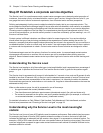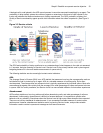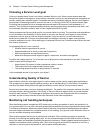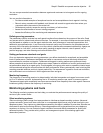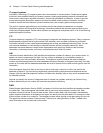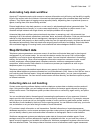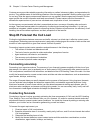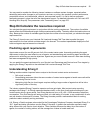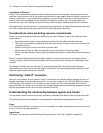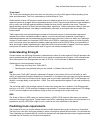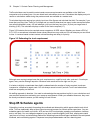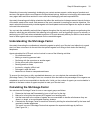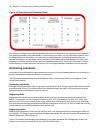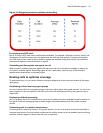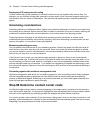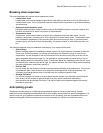30 Chapter 3 Contact Center Planning and Management
Limitations of Erlang C
Erlang C has fundamental principles that do not reflect real-world circumstances. It assumes all of the calls
reach the contact center and all of the callers wait indefinitely to reach agents. Because Erlang C assumes no
blocking or abandons, it may overestimate the agents you need. Erlang C requires accurate information on
call flow where voice messaging and call overflow are employed, assumes your Call Load prediction is
extremely accurate, and assumes you have the same number of agents handling calls the entire half hour.
Although Erlang C has its limitations, it is the preferred planning tool as it provides reasonable traffic estimates
for contact centers that maintain good service-minimal blocking and few abandons.
Considerations when predicting resource requirements
Erlang C provides theoretical numbers for staffing that you need to assess in light of the following contact
center realities:
• The contact center blocks a certain proportion of calls and some callers abandon their calls.
• Talk time is unpredictable, and although most calls may last two to three minutes, a few calls can last
upwards of an hour.
• Agents in training may require more time to process calls.
• Agents may use wrap up (after-call paperwork) time inconsistently during busy periods.
• Not all of the agents within an agent group are available at all times to handle calls offered to the agent
group.
Erlang C predicts staffing needs fairly accurately. However, contact centers that use skills-based routing,
overflow, interflow, and advanced routing options need to use intuition and experience in adjusting the final
numbers.
The Erlang C formula uses your historical Call Load and Average Talk Time data to predict the agent
requirement for the time interval and date range in the forecast. The resultant spreadsheet displays the Call
Load and agents required across time intervals.
Performing “what-if” scenarios
After you run a forecast, you can perform “what-if” scenarios on the resultant data by changing the value of
forecast parameters and recalculating the results. You can enter values for the ACD Calls Offered, average
ACD Handling Time, Wrap Up Time, and Service Level Percent and Time and recalculate the number of
agents required. For example, you can reduce the average handling time and recalculate the agents required
and the calls handled across 15-minute time intervals for the shift.
Understanding the relationship between agents and trunks
You are already familiar with the terms GOS (probability of blockage) and Service Level (average wait time).
The following definitions are essential to understanding the relationship between agents and trunks.
Delay
Trunk calculations assume no queueing. For trunk calculations, the delay includes the time from when a trunk
picks up a call until an agent answers it.
Agent Load
The Agent Load includes the ACD Handling Time and Wrap Up Time. See “Handled” on page 251.



